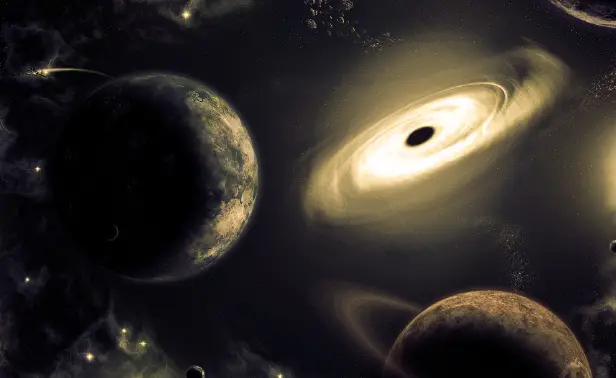This is the largest black hole ever measured, surpassing the size of our solar system.
Astronomers have made a groundbreaking discovery of the largest black hole ever observed. This colossal black hole is a staggering 40 billion times more massive than our sun, making it nearly two-thirds the mass of all the stars in the Milky Way. It resides within a supermassive galaxy that is believed to have formed through the collision of at least eight smaller galaxies.
Situated at the heart of the Abell 85 galaxy cluster is the immense elliptical galaxy known as Holm 15A. To ascertain the mass of the central black hole within this galaxy, a team of astronomers devised a model and captured an image of the stars orbiting Holm 15A. Their findings, which have been detailed in a recent paper uploaded to the preprint site arXiv and are set to be published in The Astrophysical Journal, shed light on this remarkable discovery.

Making monster galaxies
An elliptical galaxy can be created when two spiral galaxies, for example, the Andromeda Galaxy and the Milky Way, interact as they collide. These elliptical galaxies can after the collision and merge again to create very large elliptical galaxies in dense places such as galaxy clusters. The bigger black holes which are the products of the merging of the central black holes can fling a huge amount of the nearby stars to the boundaries of the newly created galaxy.
The supermassive elliptical galaxy is formed after the merging of the two galaxies as a result of which the whole galaxy is trapped in the black hole and the resulting galaxy has very less gas to generate new stars thus leaving the center looking quite empty after the stars are flung out by the black hole and the surrounding gas is also used up. Astronomers call the big elliptical galaxies with small centers “cored galaxies. ” These huge cored galaxies are usually found at the centers of galaxy clusters.
The big galaxy in the center of the galaxy cluster of Holm 15A, which was formed from the merger of two already huge cored elliptical galaxies, is the conclusion of the researchers of the recent study. This sign shows that over billions of years, Holm 15A most probably came from the merging of eight smaller spiral galaxies. Elliptical galaxies are the result of a collision between two spiral galaxies, cored elliptical galaxies are formed by a pair of those ellipticals, and Holm 15A is the outcome of a pair of cored galaxies. The central black hole in the system also, which developed through this big mergers, is a gigantic colossus that has the size of our solar system and a mass that is the same as the 40 billion suns.
Explaining quasars
The scientists are excited by the discovery of the biggest black hole ever noticed. Jens Thomas, an astronomer at the Max Planck Institute for Extraterrestrial Physics in Germany, said that he was very excited, he said, “I am fascinated by just imaging a black hole that is so huge. ” This finding not only makes the researchers excited but also it makes us understand the quasars – the distant galaxies with massive central black holes that have the brightness to emit a lot ofRoberto Saglia, another contributor to the study, who works at the Max Planck Institute, emphasized the importance of this finding by saying, “At last we found one nearby, which confirms our point of view about quasars and the accretion process on black holes.
Do not forget to share your opinion with us to provide you with the best posts !




0 Comments